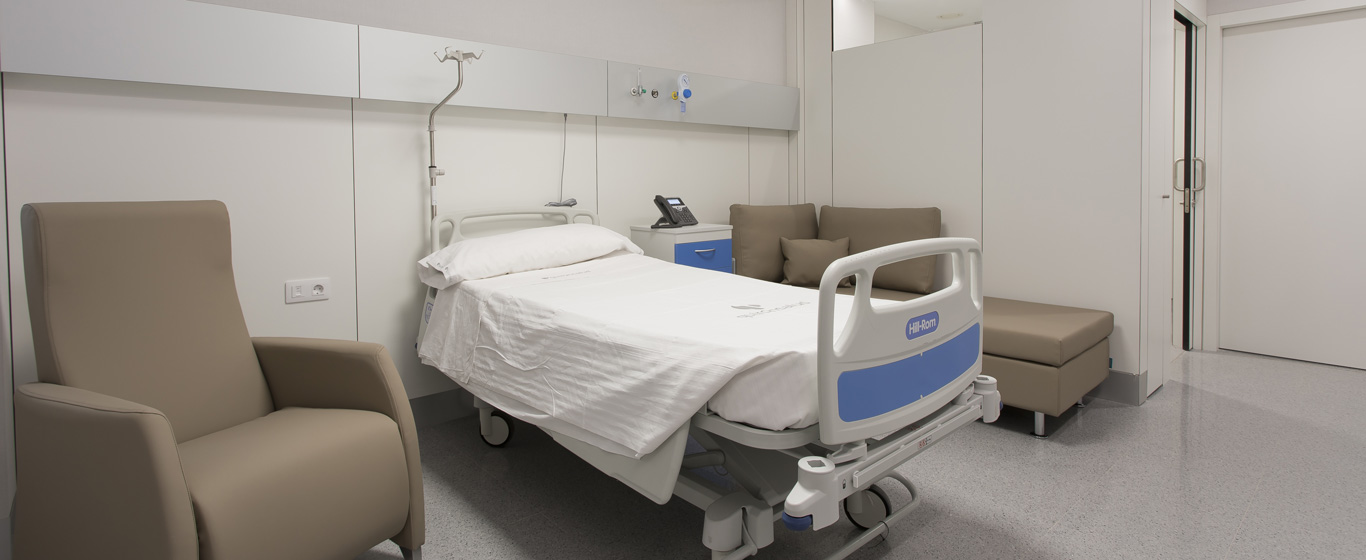Hepatic Elastography
Hepatic elastography is a procedure that uses low-frequency sound waves to measure the stiffness of the liver and quantify the presence of fibrosis. The test can be performed with magnetic resonance imaging or with a device similar to an ultrasound called FibroScan®, which is why this test is also referred to as FibroScan.

General Description
Hepatic elastography, or hepatic elastometry, is an imaging diagnostic test that measures the elasticity of liver tissues and identifies their degree of stiffness. It is a simple, non-invasive alternative to biopsy.
The stiffness of the liver is due to the presence of fibrosis, which is scar tissue. Fibrosis is a clear indicator of some form of liver condition, such as steatosis (fatty liver) or viral hepatitis. As the disease progresses, the scar tissue replaces healthy liver cells, interfering with normal liver function and increasing the risk of developing cirrhosis or liver failure.
When is it indicated?
Hepatic elastography is used to detect and quantify the presence of fibrosis in the liver, making it possible to:
- Early diagnose liver conditions (since these do not always present symptoms in the early stages). This allows for the development of an early prevention or treatment plan.
- Determine the severity of liver disease, which in turn guides treatment selection.
- Monitor disease progression and treatment effectiveness.
Some of the liver diseases for which elastography is requested include:
- Viral hepatitis
- Liver cirrhosis
- Hepatocellular carcinoma
How is it performed?
The basis of hepatic elastography is to measure the propagation speed of elastic waves (vibrations) in liver tissues. The stiffer the tissues, the faster the waves propagate.
There are two main techniques to perform the measurement:
- Transition elastography (FibroScan®): Uses a device similar to an ultrasound machine, incorporating a probe or transducer that moves across the skin of the abdomen. The transducer emits two types of waves: one is a pulsatile vibratory wave that penetrates liver tissue; the other is an ultrasound wave that captures the speed at which the first wave propagates. The device's software processes the data and generates an image of the elastic wave and the liver stiffness value.
- Magnetic resonance elastography: In this case, a circular conductor is placed over the lower right side of the abdomen, connected to a generator that emits low-frequency sound waves. Using a magnetic field and the emission of radio waves, the MRI generates images of the waves traveling through the liver, and the corresponding software transforms these into an elastogram—a color map of the liver showing the different stiffness levels of the tissues.
In both procedures, the results classify fibrosis into five stages:
- F0: No fibrosis
- F1: Mild fibrosis
- F2: Moderate fibrosis
- F3: Severe fibrosis
- F4: Cirrhosis
Risks
Hepatic elastography is a non-invasive, completely safe procedure for the patient. However, transition elastography has certain limitations, as in patients with obesity or ascites (fluid accumulation in the abdomen), the FibroScan® values may not be reliable and could overestimate the degree of fibrosis.
What to expect from hepatic elastography
Hepatic elastography is performed in the radiology room. In transition elastography, the patient lies on their back on the table with their right arm behind their head. Before starting, the patient removes any clothing covering the abdomen, and the specialist applies a gel to the area to help transmit the waves. The doctor places the transducer over the lower right ribs and sends out the sound and vibration waves while the patient holds their breath. It is normal to feel vibration on the skin, but it is not an unpleasant or painful sensation.
Before the magnetic resonance elastography begins, the patient is asked to remove clothing and metallic objects and wear a gown provided. Once lying on the table, the conductor is placed on the abdomen, on the lower right side of the chest, and the table is introduced into the MRI machine. The patient must remain as still as possible during the test and hold their breath when the waves are sent. While the MRI images are being taken, loud, repetitive sounds may be heard, which can be bothersome, but the process is completely painless.
In both cases, the procedure is outpatient and takes approximately 10 to 15 minutes. After the exam, the patient can resume normal activities without the need for further care.
Specialties that request hepatic elastography
Hepatic elastography is requested in the field of digestive medicine (gastroenterology).
How to prepare
The patient should fast for at least four hours before the elastography, as liver stiffness may increase after meals. Additionally, if the elastography is being performed with magnetic resonance imaging, the patient must remove all metallic objects such as glasses, earrings, hearing aids, watches, or dentures, as these may be attracted by the MRI's magnetic field and distort the images. If the patient has any implanted metallic medical devices, they must inform the specialist.




































































































